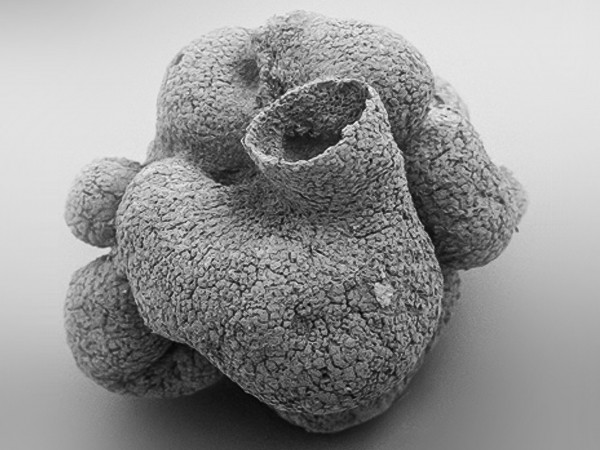|
To the untrained eye, real animal sponges may seem as boring as synthetic kitchen sponges. But the evolution of these highly porous creatures has long been a mystery, with major implications for the early evolution of animals. Scientists debate when sponges, animals belonging to the phylum Porifera, first emerged. Some think it wasn’t until the Cambrian period, between 541 million and 485 million years ago, whereas others put it as early as 760 million years ago, during Precambrian times. Yet while some genetic analyses of modern sponges suggest a Precambrian date, claims for fossils that early have been met with skepticism due to their poor preservation. Getting the date right is important for understanding the timing and course of animal evolution, because the split between the sponges and most other animals (called the Eumetazoa) was a key event in the early history of life on Earth. A research team now claims that the tiny fossil pictured above, discovered in southern China and dated to 600 million years ago—clearly during the Precambrian—isthe oldest known poriferan. The critter, reported online today in the Proceedings of the National Academy of Sciences, is just over 1 millimeter high and wide, the size of a small bead, and was found in a phosphorus-rich geological formation known for preserving animal fossils in an excellent state. The new specimen, the team says, is unmistakably sponge like, featuring three hollow tubes and a highly porous surface. The new discovery indicates that the common ancestor of sponges and Eumetazoa lived much earlier than many scientists assumed. And because today’s sponges and eumetazoans differ in some important genetic features, the team says, the find could also help date the first appearance of genes key to the evolution of most animals living today.

Eocyathispongia qiania |

